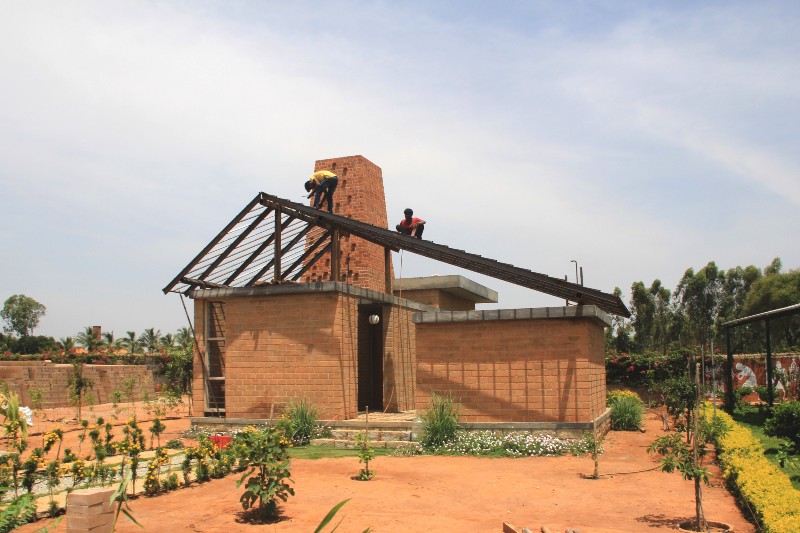Think Outside The Box About Sustainable Housing And Give Shipping Container Homes A Try

Across the Western world, container architecture is taking off as a cheap and convenient alternative to conventional housing. Once associated with remote, off-grid living, containers are quickly entering the mainstream as more people look for sustainable, eco-friendly lifestyles. They allow resources to be repurposed and spaces to be reimagined in interesting, innovative ways. From affordable and practical to luxurious and downright dramatic, examples abound of shipping crates being turned into cafes, offices, libraries homes and schools.
Container architecture uses shipping containers that are discarded from main use or lying dormant either because they are too expensive to ship back to the exporting country or because they are damaged and no longer sea-worthy. While melting the container down to extract and reuse the steel is an option, it would require a huge amount of energy (almost 8000 kWh) and thus, repurposing the boxes is a more environment-friendly solution.
Shipping containers are made of mild steel (MS) and are designed to be structurally robust, rust-resistant and able to withstand long exposure to extreme weather. They are also versatile and lend themselves to variations in layout and design. Because they are modular, they are easy to move and thus, a great solution to the problems posed by remote locations, high land cost, unavailability of labour and raw material.
Studio Alternatives based in Pune, is among the first firms to popularise container architecture in India. The studio was started in 2009 by designer Dhara Kabaria and her sister Dolly to reclaim waste material and turn it into beautiful, utilitarian items. Their products include unique, handcrafted jewellery, furniture, lamps, clocks, coasters and bowls upcycled from paper waste, PVC pipes and other scrap.
Kabaria’s interest in sustainable design began during her Master’s degree at CEPT, Ahmedabad where she studied the alternative uses of material. In 2014, their search for sustainable solutions led Kabaria and her partner Sonali Phadke to experiment, for the first time with shipping container architecture. The first unit they made — a swanky, off-grid farmhouse near Pune, was built over 2 months and installed in less than a week. The 320 square foot, 1 BHK home packs a punch. It contains a fully functional bathroom and kitchen, a solar-powered LED TV and refrigerator, a concealed glass cook top and water-purifier. This project convinced Kabaria of the potential of containers as a low-energy alternative to conventional housing.
The interior of the container farmhouse
Studio Alternatives has just finished installing its second container structure for Emmanuel School in Nagpur. The containers are designed to be used as classrooms and are part of a larger ongoing container structure project to teach children about environmental responsibility and resource reuse. Since the school operates on leased land, a container structure will allow for easy movement if they decide to shift locations when the lease expires, explains Kabaria.
The container housing the classroom of Emmanuel School in Nagpur
Inside the classroom
Their third project involved joining two containers together to function as a library and classroom space for an NGO-run school in Uchat village in Palghar, Maharashtra.
Take a look inside
About the benefits of container architecture, Kabaria says, “They do not disturb the earth as much as regular constructions do since they require no large-scale excavation and deep foundations.”
All they need are four concrete footings to rest on. Dormant shipping containers are available in the thousands at the Mumbai port and are transported by road to Pune.
Shipping containers are also easy to stack on top of each other or join together into different layouts. This is the first time the duo has experimented with nut-bolting two containers together. In another first for them, all the elements of design and assembly were completed in their Pune workshop before ready-to-occupy containers were transported to the site and joined together for installation.
Kabaria explains that container homes can have all the amenities and aesthetics of a regular home.
“People are often worried that opting for container structures will require them to compromise on design and function, but the options for doing up your interiors, whether they’re affordable or luxurious, are limitless.
Containers give occupants all the benefits of a sturdy, permanent structure together with the perks of easy mobility in case they decide to move. Upon finalisation of design, container structures take up to 6–8 weeks to complete and install.
The interior steel walls are insulated according to the climatic conditions of the location and everything else in the home can be made to resemble a fully functional, regular structure. Complete plumbing and wiring is done at the workshop. At the time of siting, three connection points — water, electricity and drainage are provided on site in 4–5 days. Homes can also be completely off-grid by having solar/ wind backup and a septic tank. The only limitation from a design standpoint, she says, is container size. Shipping containers come in standard sizes with 20 ft length x 8ft width x 8.5 ft height being the smallest. Thus, unit sizes are fixed as in the case of all modular constructions.
“Costs of container homes vary widely with the quality of interiors used”, Kabaria mentions, dispelling any notion that shipping containers are a low-cost option. Readymade containers eliminate the need for laying a foundation, ceiling slab and walls, thus reducing the associated costs. But, other costs — of doors, windows, interior walls, flooring, finish etc. are the same as those of a regular structure. She is also doubtful about the feasibility of shipping container homes in urban areas. “It is cost-effective to have container homes in remote rural areas where conventional construction is expensive and labour cost is high. This is because design and assembly are done in our workshop at city rates and installed on site.”
Cost per square foot wise also, container homes are comparable to regular constructions — varying between Rs. 2000 — Rs. 5000 per square foot according to the design and choice of materials and interiors. The Studio Alternatives team is currently working on creating multiple container spaces as affordable housing options in the future, using stackable containers with different insulation materials and eco-friendly interiors.
Are shipping container homes truly sustainable?
Kabaria is no stranger to the debate on whether container structures are sustainable or not. As a designer working with reclaimed material, she has always been mindful of the energy and resources she uses. “Upcycling often uses a lot of water and energy, because of which it does not always have a small carbon footprint”, she says.
Container structures represent an energy saving over regular constructions because they use containers that are dormant or discarded from main use and forgo the use of bricks, concrete, steel or sand. However, they are not as environment friendly as earth constructions, she claims. Further, the sustainability of a container structure is entirely determined by how energy-efficient its interiors are and how much waste is produced while making the box habitable.
Thus, while houses-in-boxes are becoming popular, how sustainable they are is as much about what’s on the inside as on the outside.
Images ©Studio Alternatives.
Maya is a social researcher by training. Her writing has appeared in Scroll, YourStory and The Alternative. She is the Founder of Eartha and tweets @Maya_Kilpadi.










